LisbonLisboaPortugal.com
The best independent guide to Lisbon
LisbonLisboaPortugal.com
The best independent guide to Lisbon
The Graça neighbourhood of Lisbon – a guide for 2025
Graça is a charming and historic neighbourhood known for its stunning miradouros (viewpoints), colourful art murals and authentic atmosphere.
The neighbourhood spans Lisbon's highest hill, and this elevation separates it from the hecticness of the downtown areas, giving Graça a pleasant, small-town feel. While exploring Graça you'll discover the authentic side of Lisbon, with locals socialising in the many cafés, family-run shops, and laundry hanging from wrought-iron balconies.
Most visitors only briefly experience Graça while heading to the wonderful Senhora do Monte viewpoint via a tuk-tuk tour, but there is a lot to see beyond the viewpoints. This includes the majestic São Vicente de Fora monastery, the historic Convento da Graça, the peaceful Cerca da Graça garden and the many vibrant murals. These murals have transformed Graça into an open-air art gallery, with eye-catching pieces adorning the side of apartment blocks or more controversial pieces hidden down side streets.
This article will provide an introduction to Graça and includes a tour of the neighbourhood, along with a guide to the best murals.
Highlights of Graça
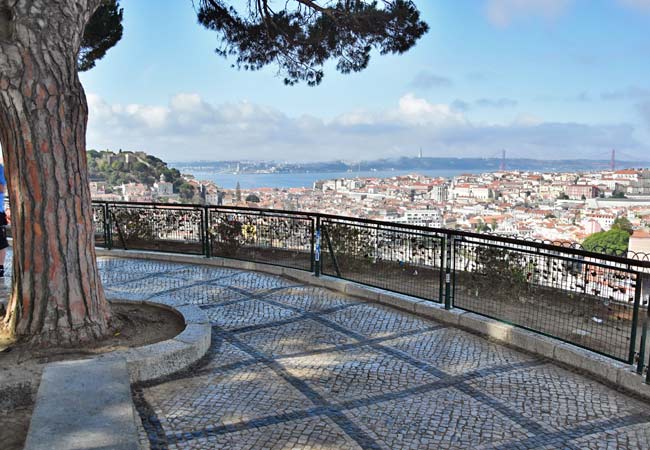
Miradouro da Senhora do Monte – Perched atop Lisbon's highest hill, this panoramic viewpoint provides stunning views over the city. Historically the location where young lovers would escape the prying eyes of their parents, it retains its romantic charm to this day once all of the tuk-tuk tours have left.
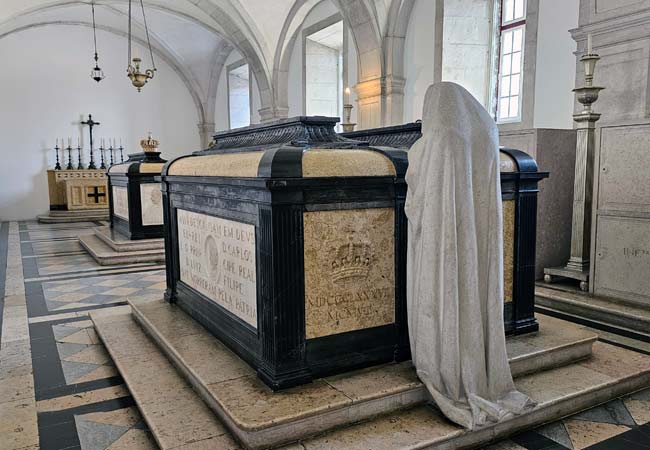
Mosteiro de São Vicente de Fora – Impressive and often overlooked 16th-century monastery, which is the final resting place of Portugal's Bragança royal family. Found within the sprawling monastery are exquisite Azulejos tile paintings, a stunning Baroque church and panoramic views from the top of the church tower.
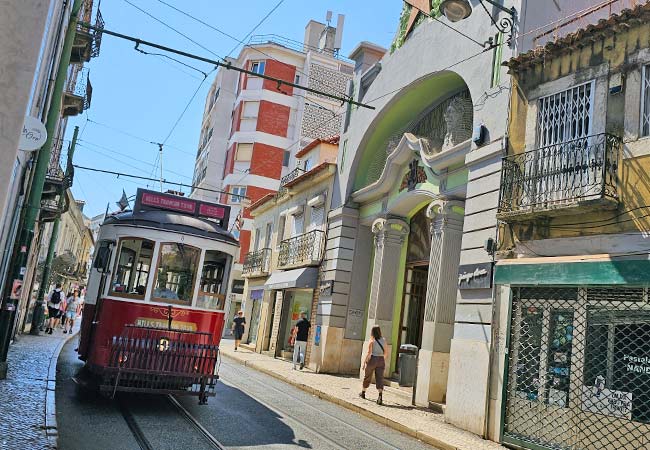
Authentic Lisbon – Graça's lively cafés, traditional restaurants and charming main street are the perfect places to soak in Lisbon's authentic Portuguese atmosphere.

Murals and street art – Graça is an outdoor gallery, where you'll find artistic surprises around every corner - from colourful murals covering the side of apartment blocks through to vibrant street art along side alleys.
An overview of Graça
Graça is a predominantly residential area of Lisbon, which was historically a working-class neighbourhood.
The area lay within the 13th-century wall that surrounded medieval Lisbon, but it was only really transformed from agricultural lands with the construction of the Santa Apolonia railway in the late 19th century.
Even in modern times, Graça retains its Portuguese atmosphere, in contrast to the excessive tourism of Alfama and the cultural diversity of Mouraria. This gives Graça a small-town feel, even though it is surrounded by the clamour and crowds of central Lisbon.
Running through the centre of the neighbourhood is the Rua da Graça, and along this street runs the number 28 tram. To the west of the neighbourhood is the highest point of Lisbon, with its many viewpoints, and beyond this, the hill steeply descends into the Mouraria neighbourhood. To the east of Graça are streets filled with 1980s apartment blocks which are of less interest to visitors.
Insight: Technically, Graça is the historic name of the neighbourhood. In official documents, the area is known as São Vicente and is much larger (extending down to Santa Apolonia train station), but locals still refer to the area as Graça.
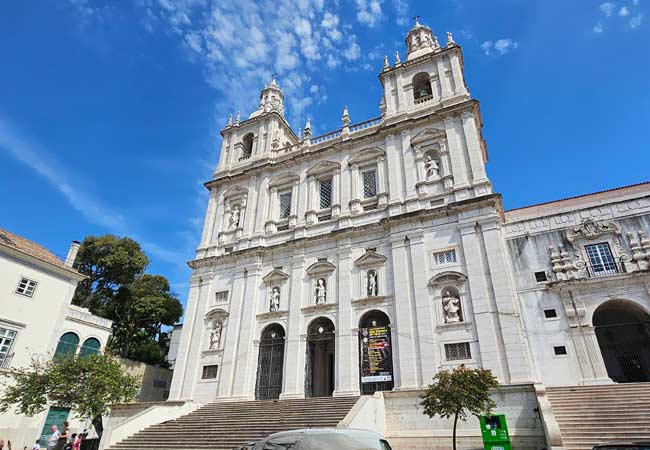
The Mosteiro de São Vicente de Fora
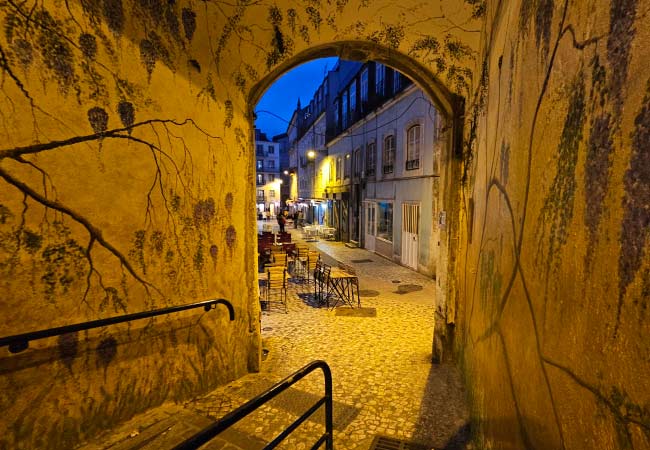
The Travessa do Monte side street contains many excellent restaurants and bars
Experiencing Graça like a local
You can avoid the crowds of tourists at the Miradouro da Senhora do Monte by heading to the peaceful terrace viewpoint in the Jardim da Cerca da Graça instead.
The open-air 'Cantinho Da Fátima' or the ‘O João’ on the Travessa do Monte both sell inexpensive Portuguese meals, and is where locals go to eat.
The terraced seating of the Milorde café, to the north of Graça, is the best location to relax the day away.
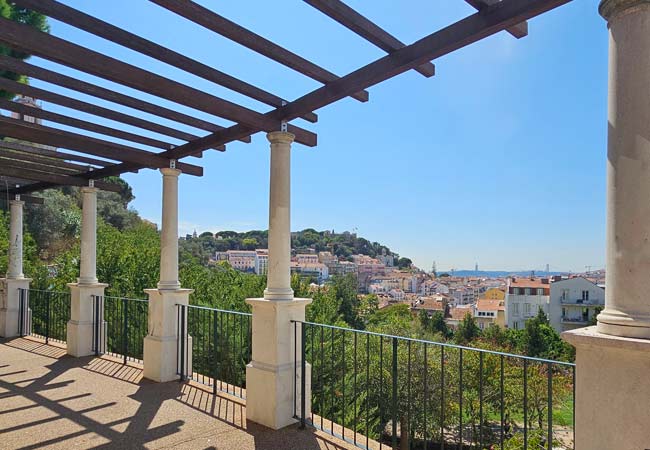
The Jardim da Cerca da Graça
A tour of Graça
Graça is only a small neighbourhood, but it is a fantastic area just to stroll around and enjoy the sights, cafes and many art pieces. A planned tour of the area typically takes 90 minutes, which could be extended to two hours by visiting the Mosteiro de São Vicente de Fora. For lunch, it is suggested to head to the Mercado de Sapadores, which contains a small food market.
Warning: There are a lot of steep hills in Graça, and any tour of the area will involve a lot of uphill walking. One way to reduce the number of uphill climbs is to get an Uber, Bolt or taxi to drop you off at the highest point, the Miradouro da Senhora do Monte (GPS 38.7190, -9.1325). From here, it is a downhill walk through the neighbourhood to the Mosteiro de São Vicente de Fora.
The interactive map below shows the main sights and a suggested tour of Graça. The tour begins from the northern side of the Alfama district, which is the way most visitors walk into Graça, and ends at the Panteão Nacional. The green markers are sights of Graça, and the yellow markers are notable murals or street art. The shaded area is the historic boundary of the Graca area. (Note: Zoom in or out to see all of the markers)
Sights: 1) Jardim da Graça 2) Graça Viewpoint 3) Igreja da Graça 4) Convento da Graça 5) Largo da Graça 6) Barros Viewpoint 7) Jardim da Cerca da Graça 8) Senhora do Monte Viewpoint 9) Travessa do Monte 10) Royal Cine 11) Mercado de Sapadores (food market) 12) Vila Berta 13) Mosteiro de São Vicente de Fora 14) Arco Grande de Cima 15) Mercado de Santa Clara 16) Panteão Nacional
Murals and street art: 17) Saudade 18) Fado Tropical em tons RGB 19) Peace Guard 20) Shepard Vhils 21) Once Upon a Time 22) Street art 23) Animated Revolution
How about a small group tour?
One of the best ways to discover Lisbon and meet fellow travellers is to join a guided tour. We have worked with Getyourguide.com for the last six years, and some of their best tours of Lisbon include:
Mosteiro de São Vicente de Fora
The Mosteiro de São Vicente de Fora is one of Lisbon's most impressive religious buildings. Inside this vast complex, you will discover a stunning Baroque church, the pantheon of the Bragança royal family and a delightful collection of Azulejo tile paintings depicting Fontaine's fables.
The monastery was established by Afonso Henriques in the 12th century and is dedicated to Saint Vincent, the patron saint of Lisbon. The majority of the monastery seen today dates from the late 16th century, while the extensive Azulejo tile paintings were added in the 17th century.
There is a lot to see here, including the twin cloisters, the magnificent church, the tower-top viewpoint, a collection of sacred artefacts, the ancient cistern and an exhibition of Fontaine's fables tile paintings. The entrance fee is just 5 euros and offers excellent value compared to Sé Cathedral or the Mosteiro dos Jerónimos.
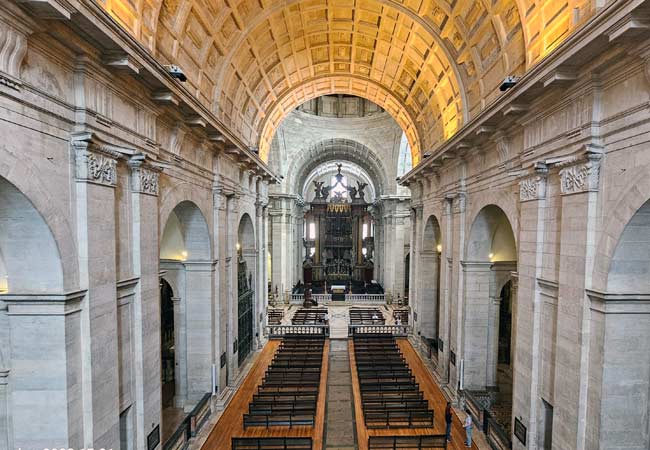
The Igreja de São Vicente de Fora.
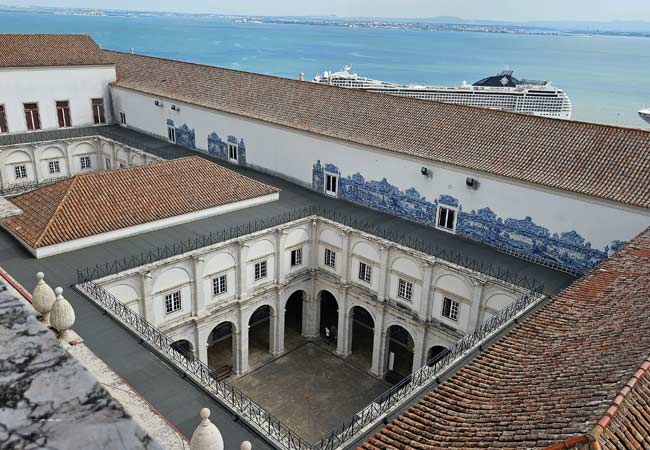
The twin cloisters with the cruise terminal far below on the edge of the Alfama district
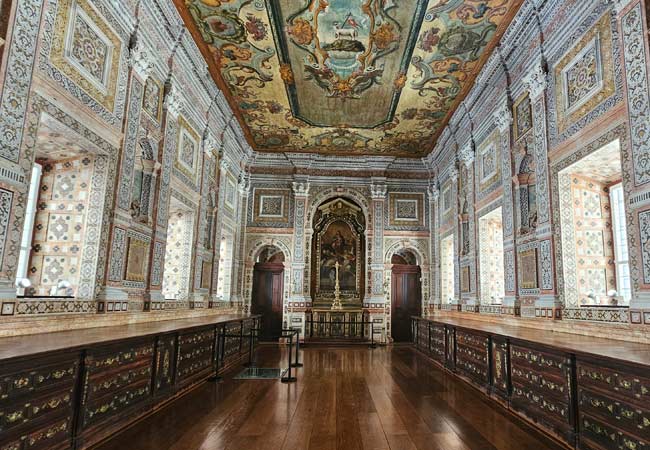
The beautiful tile paints of the sacristy
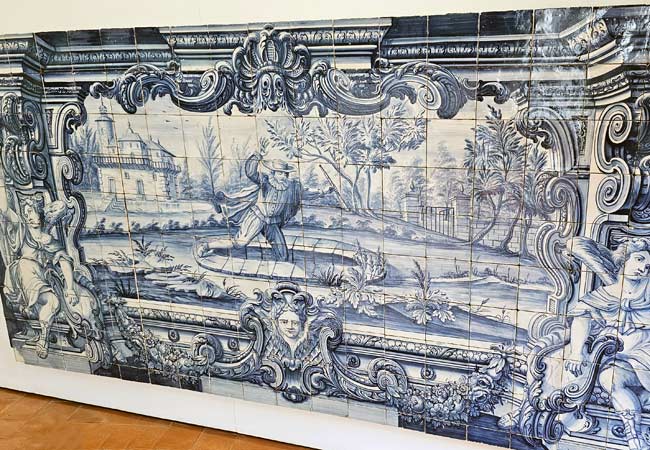
One of Fontaine's fables - "The Astrologer Who Fell in a Well" - depicts an astrologer so focused on reading the stars and predicting the future that he fails to see a well, which he falls into! The exhibition on the upper floor contains over 25 of these charming tile paintings.
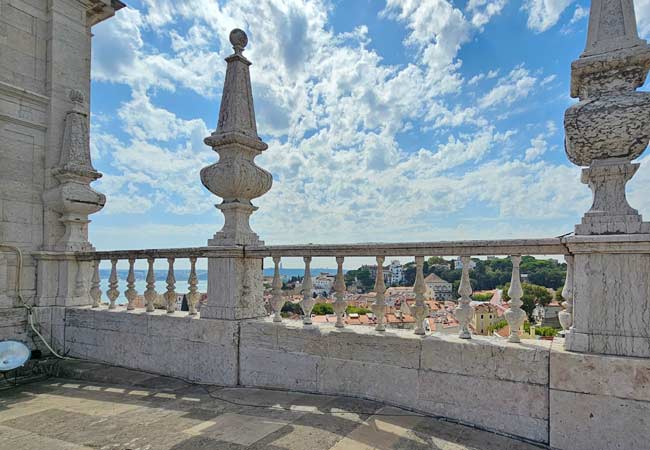
The view from the top of the Igreja de São Vicente de Fora tower
The viewpoints of Graça
As the highest point in central Lisbon, Graça is home to several scenic viewpoints, and these are on the western side of the neighbourhood.
The most famous is the Miradouro da Graça, which lies in front of the Convento da Graça and overlooks the castle. This is a popular location with tourists, as it is close to the Alfama district and has a traditional Kiosk (the Esplanada da Graça), where you can sit, drink, relax and admire the magnificent view.
Situated at the highest point of Graça, the Miradouro da Senhora do Monte is the best viewpoint of Lisbon. However, it does involve a steep uphill walk if you arrive here on foot. This location is a popular stop-off for tuk-tuk tours, and the viewpoint can get crowded at peak times.
For a more peaceful and relaxed viewpoint, there is the Jardim da Cerca da Graça. This location is not as high as the previous two viewpoints, but it is a wonderful setting at sunset. Also within the park is a drinks kiosk, the Quiosque Popular.
The final viewpoint is the Miradouro dos Barros partway between the Miradouro da Senhora do Monte and the Jardim da Cerca da Graça.
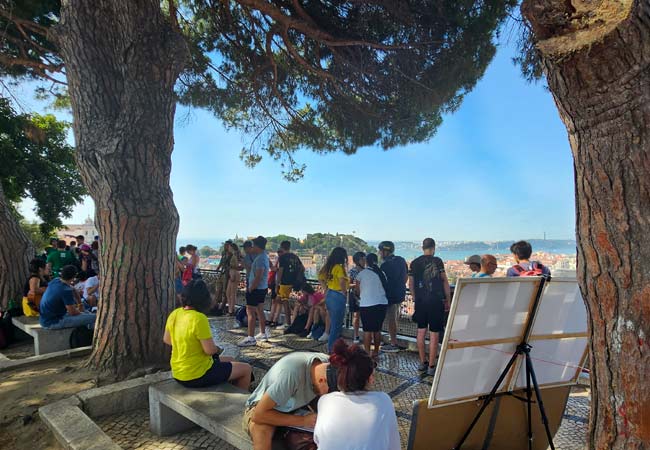
The Miradouro da Senhora do Monte can get busy during the day with the endless flow of tuk-tuk tours.
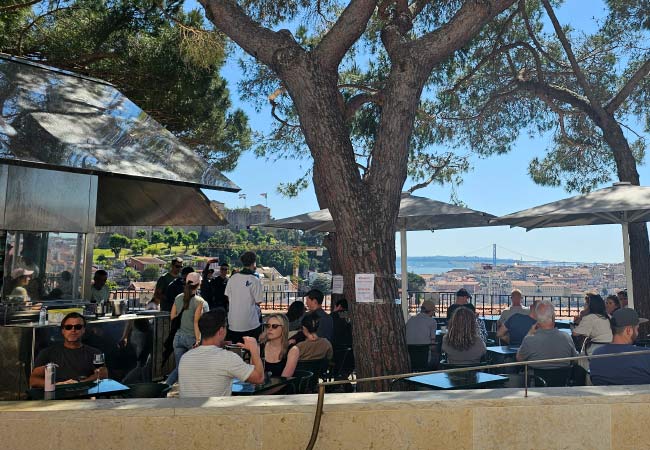
The Miradouro da Graça is an enjoyable location to take a break from sightseeing and the hills of the neighbourhood
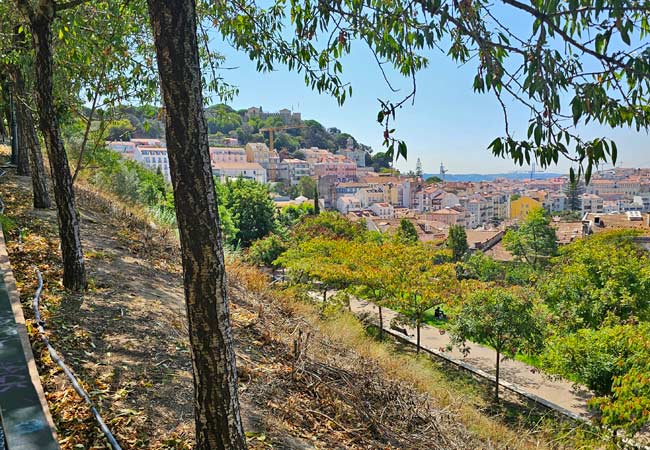
The Jardim da Cerca da Graça is a peaceful alternative to the more famous viewpoints.
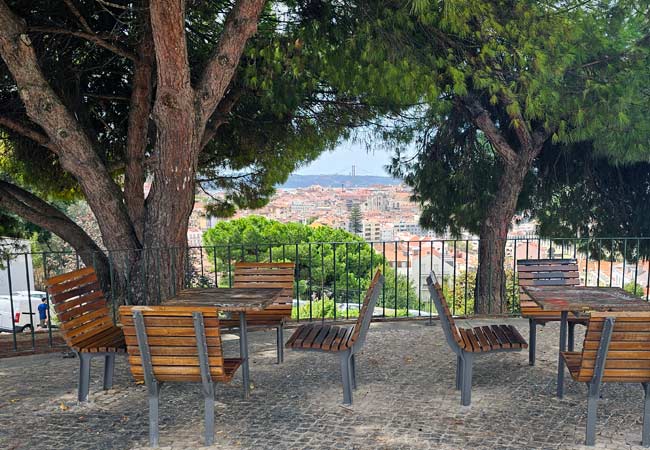
The Miradouro dos Barros
Sights of Graça
Convento da Graça
The Convento da Graça was founded in 1291, but much of the medieval building was destroyed by the 1755 earthquake. It was reconstructed in a late-baroque style, and the interior is lined with beautiful tile paintings.
The unique feature of the convent are the beautiful 18th-century tile paintings in the chapter room. These depict medieval Christian martyrs in violent battle scenes or moments before their deaths, and many faces of the martyrs’ attackers have been damaged and scratched out. Bizarrely, this semi-gruesome room was used a nursery during the early 20th century.
Found within the church is the 'Senhor dos Passos da Graça', a statue of Christ carrying a cross, which is paraded through Graça on the second Sunday of Lent.
There is an excellent viewpoint from the terrace next to the bell tower and entrance is €5. The convent and church are free to visit, and are a good alternative to the Mosteiro de São Vicente de Fora.
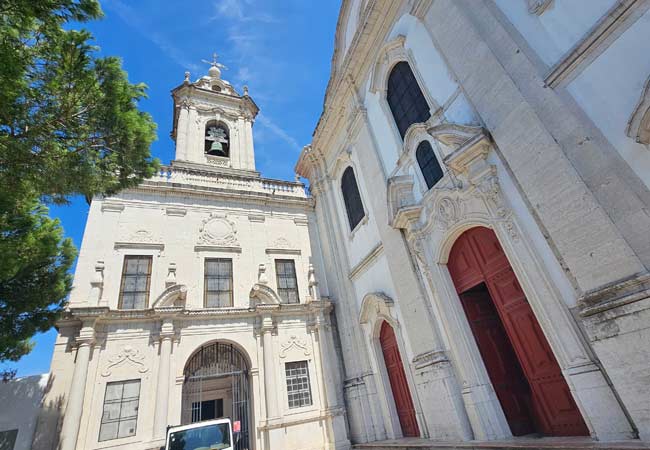
The entrance to the Graça church (right) and the convent (left)
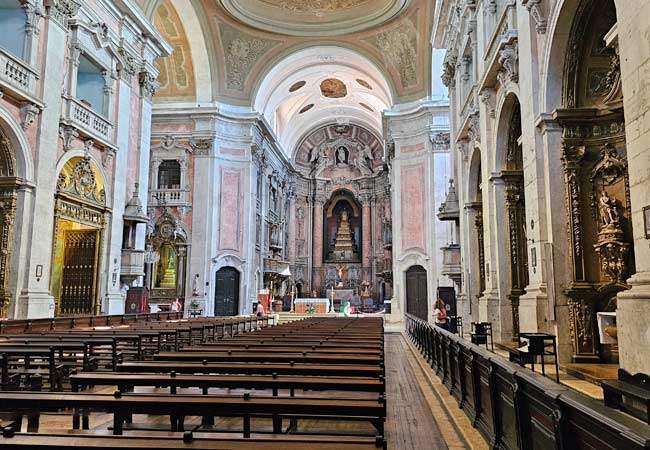
The Igreja da Graça is very similar to many of the churches rebuilt after the 1755 earthquake.
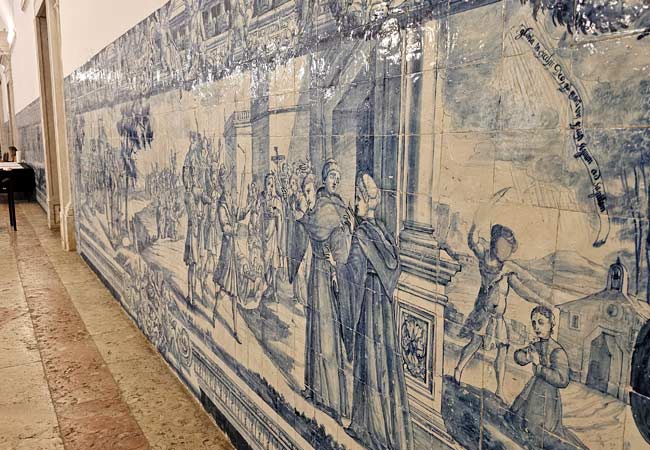
The Azulejo tile paintings of the Chapter house with the faces of the killers scratched out.
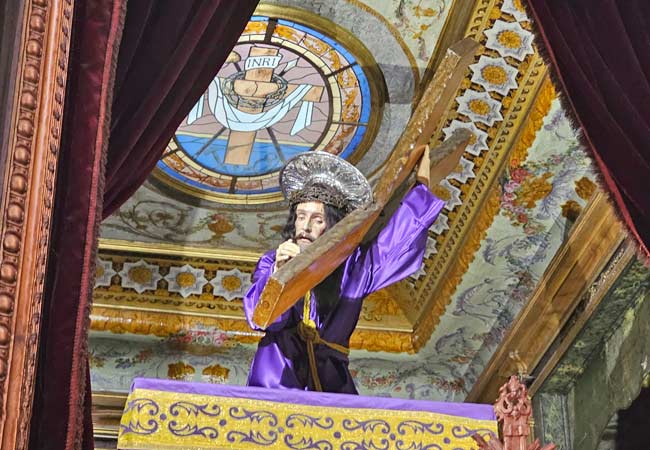
The Senhor dos Passos da Graça statue
Villa Sousa
Graça was traditionally a working-class neighbourhood. During the 19th century, many factories provided accommodation to their workers who had emigrated from the countryside.
The Villa Sousa is the finest example of a labour house in Graça and follows the typical style of being set around a private courtyard. In the Villa Sousa, the factory owner and his family lived in the front building while the factory workers lived in the rear.
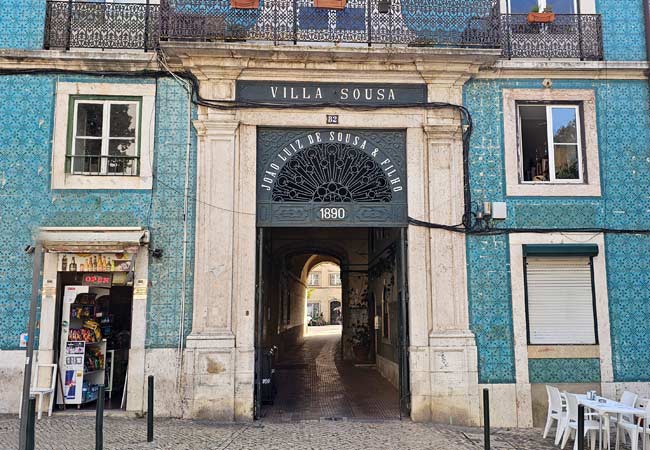
Vila Berta
The Vila Berta is another example of the working-class accommodation, and this delightful street is one of the hidden gems of Graça. Along the street, the upper-class residents had houses with wrought iron balconies, while the workers lived on the opposite side of the street.
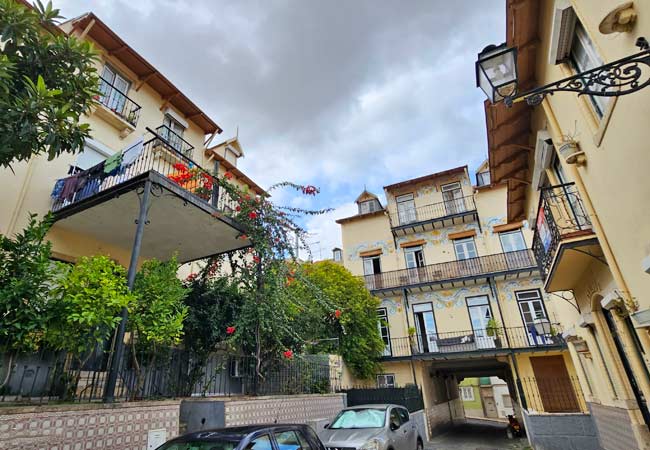
Royal Cine
The Royal Cine was one of the most popular cinemas in Lisbon and was the first to show a movie with sound. The Art Nouveau cinema opened in 1929 and was constructed to entertain workers from the Bairro Estrela d'Ouro (Golden Star District), hence the star above the entrance.
The cinema closed in 1980 and has since been converted into a Pingo Doce supermarket. However, many of its original features were protected, including the staircase that leads from the old atrium up to upper levels.
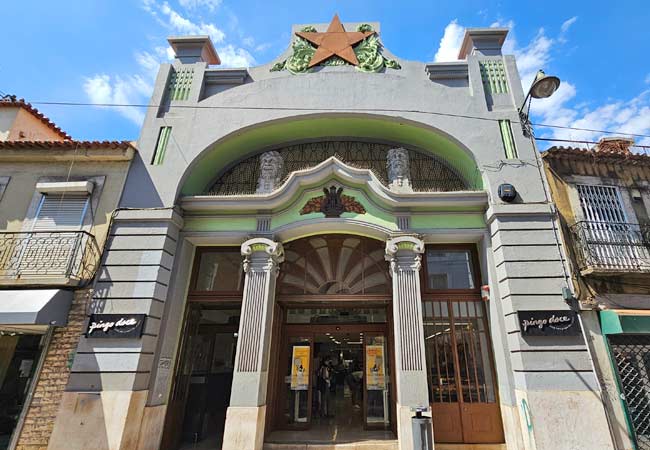
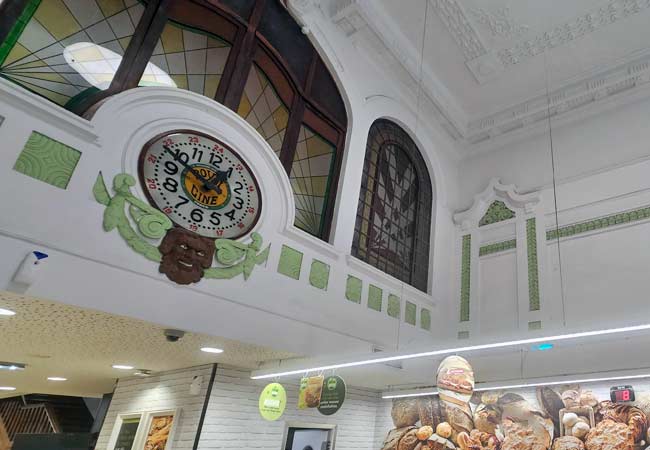
The Pingo Doce super market has many of the original features of the Royal Cine
Arco Grande de Cima
Arco Grande de Cima connects the São Vicente de Fora monastery to its former gardens and crosses one of the medieval roads into the city. The arch was built in 1808, but in 1914, the Gil Vicente School was constructed on the monastery's gardens. This was the first school established by the newly formed Portuguese Republic.
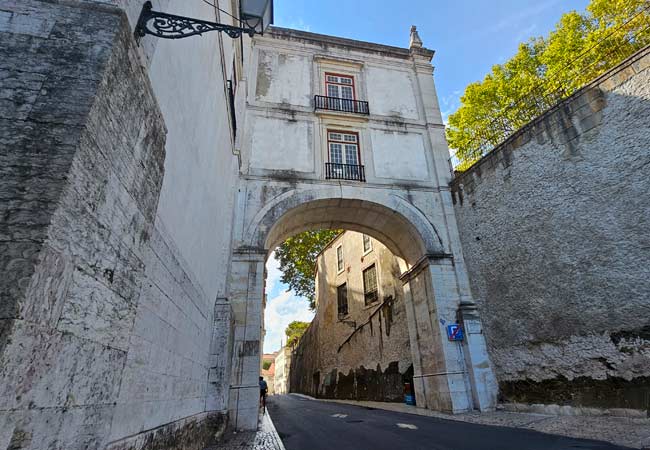
Jardim Augusto Gil
The Jardim Augusto Gil is a small urban garden to the side of the Convento da Graça, which has an ornamental lake as its central feature.
The shaded benches of the garden are a pleasant area to sit, especially if the Esplanada da Graça café is full. In the park is the distinctive "Mãe e Filho" statue.
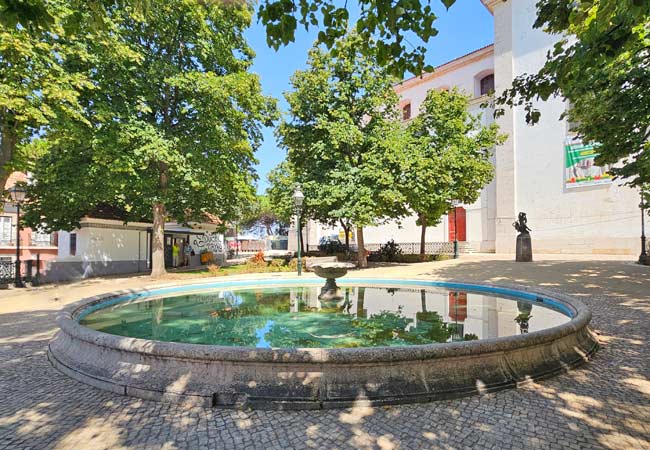
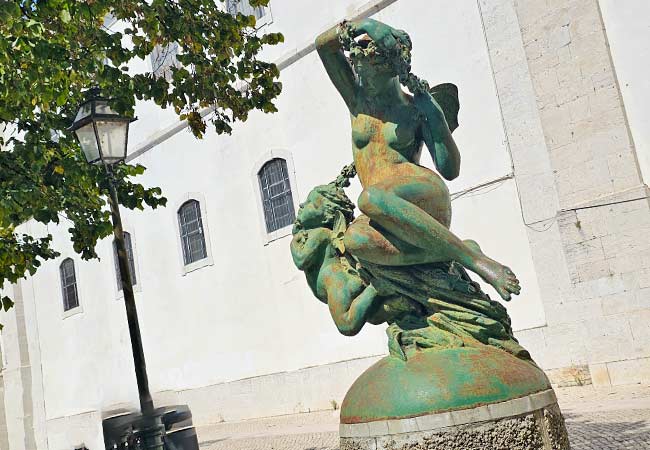
The Mother and Child (Mãe e Filho) statue
Street art and Murals of Graça
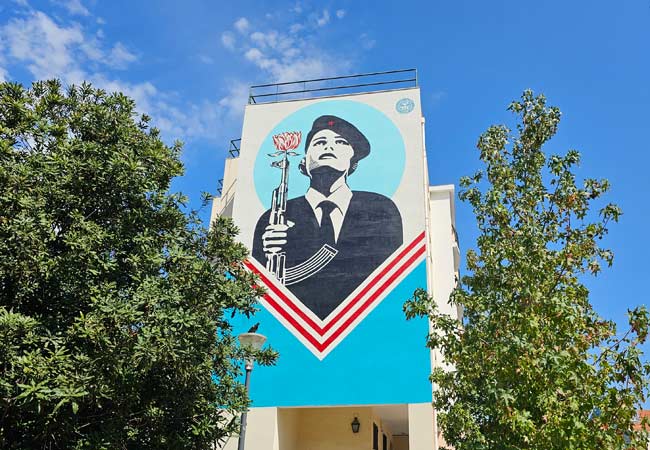
The 'Peace Guard' (by Shepard Fairey) is one of the most iconic murals in Lisbon. The painting commemorates the 1974 Carnation Revolution and depicts a soldier with a Carnation flower in the muzzle of her gun.
This mural actually recreates true events of the day, when a café worker (Celeste Caeiro) gave a carnation to a rebelling solder who placed it in the mussel of the gun, thus signifying that the rebelling army had no wish to fire their guns.
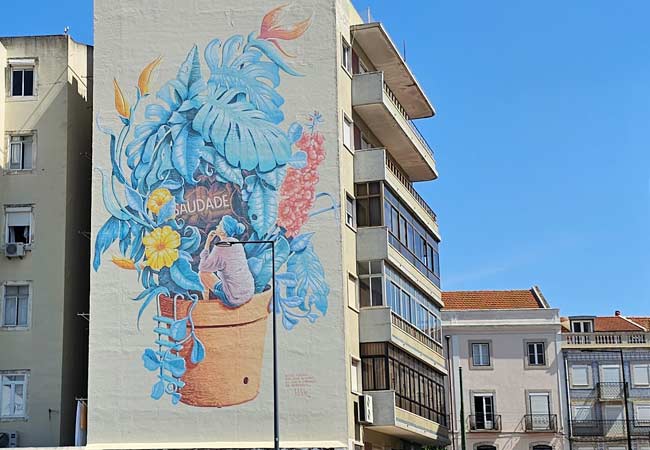
The mural by Mario Belém depicts the Portuguese word 'Saudade', the nostalgic feeling of missing someone or something.
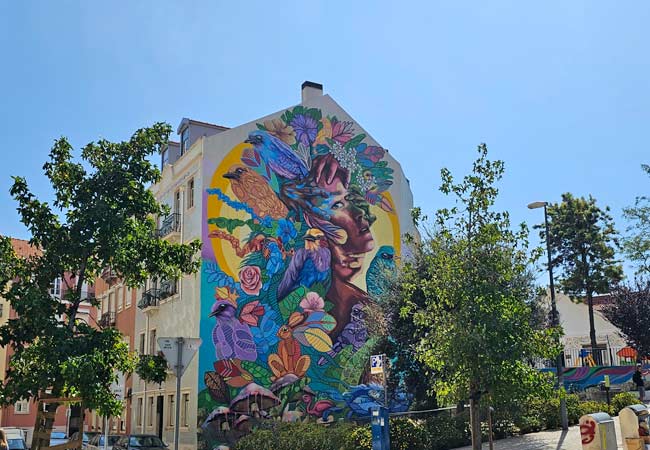
The Fado Tropical em tons RGB (Tropical Fado in RGB tones) by Ozearv is one of the most vividly striking murals of Graça.
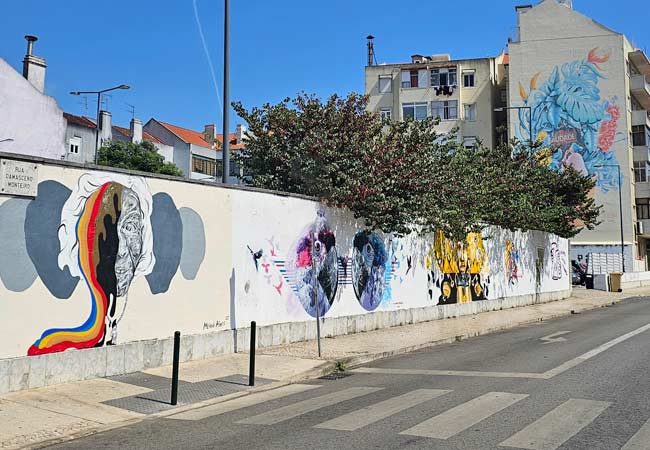
Smaller urban art pieces along the Rua Damasceno Monteiro
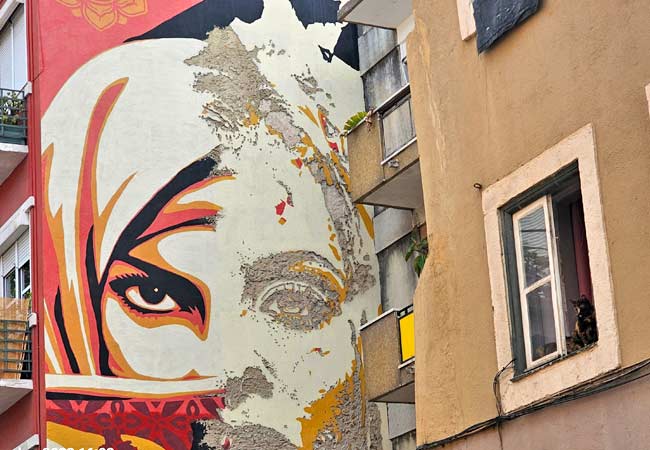
“Half Baked” by Shepard Fairey and Vhils, lies along the Rua da Senhora da Glória, a lower street Graça.
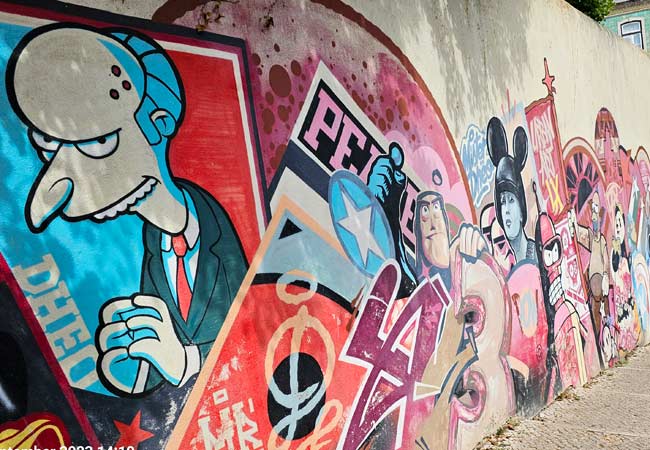
Animated Revolution (by Mr. Dheo and Pariz One) on the Travessa de São Vicente depicts the 1974 revolution via famous cartoon characters. It was created to appeal to the younger Portuguese generation.
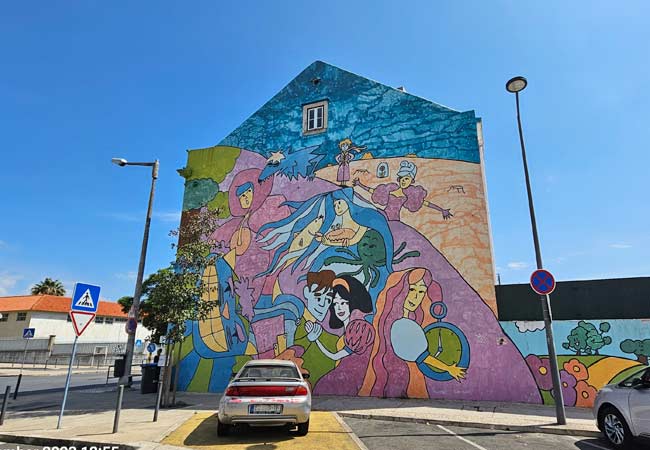
'Once Upon a Time' (by Isa Silva) on the side of the Básica Natália Correia school depicts female fairy tale characters.
Discover more of Lisbon with our most popular guides
If you've found our content valuable, we'd welcome your support.
The digital publishing landscape has evolved significantly. As a small independent publisher, we face growing challenges. Search engines increasingly favour paid content over organic results, while AI-generated content often reproduces original work without attribution.
To support our work, please consider bookmarking this page (press Ctrl + D) for quick access. If you find an article helpful, we'd be grateful if you'd share it with friends on social media.
For specific questions, please see our Reddit community at r/LisbonPortugalTravel.
Should you notice any outdated or incorrect information, please contact us at [email protected]
Thank you for helping us continue to provide valuable content in an increasingly challenging digital environment.
A complete list of all of our Lisbon articles
If you've found our content valuable, we'd welcome your support.
The digital publishing landscape has evolved significantly. As a small independent publisher, we face growing challenges. Search engines increasingly favour paid content over organic results, while AI-generated content often reproduces original work without attribution.
To support our work, please consider bookmarking this page (press Ctrl + D) for quick access. If you find an article helpful, we'd be grateful if you'd share it with friends on social media.
For specific questions, please see our Reddit community at r/LisbonPortugalTravel.
Should you notice any outdated or incorrect information, please contact us at [email protected]
Thank you for helping us continue to provide valuable content in an increasingly challenging digital environment.



































